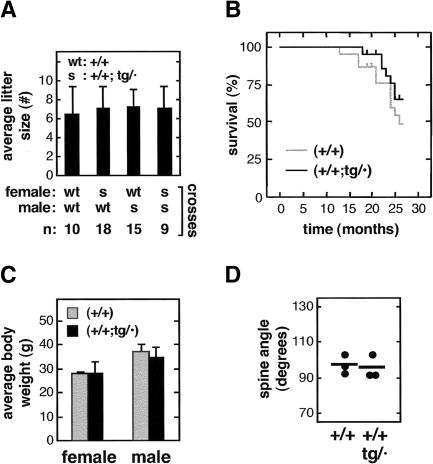Figure 6.
Normal viability and aging of super Ink4a/Arf mice. (A) Super Ink4a/Arf mice have normal fertility. Average litter size and standard deviation of the indicated crosses. The number of litters scored for each type of cross is indicated (n). (B) Super Ink4a/Arf mice have normal lifespan. Cohorts of wild-type (n = 22) and super Ink4a/Arf (n = 22) littermate mice were followed for a period of 27 mo. The figure shows a Kaplan-Meier representation of the survival of the two groups of mice. (C) Old super Ink4a/Arf mice have normal weight. Average weight and standard deviation of the indicated mice. All mice were 2 yr of age. The size of each group of mice was as follows: (+/+) females, n = 5; (+/+) males, n = 8; (+/+;tg/·) females, n = 7; (+/+;tg/·) males, n = 9. (D) Similar lordokyphosis in old super Ink4a/Arf and wild-type mice. Dots indicate the angle of the dorsal spine measured from X-radiographs of individual mice at 2 yr of age, as described (Garcia-Cao et al. 2002). Short lines indicate the average. The size of each group of mice was as follows: (+/+), n = 3; (+/+;tg/·), n = 3.

